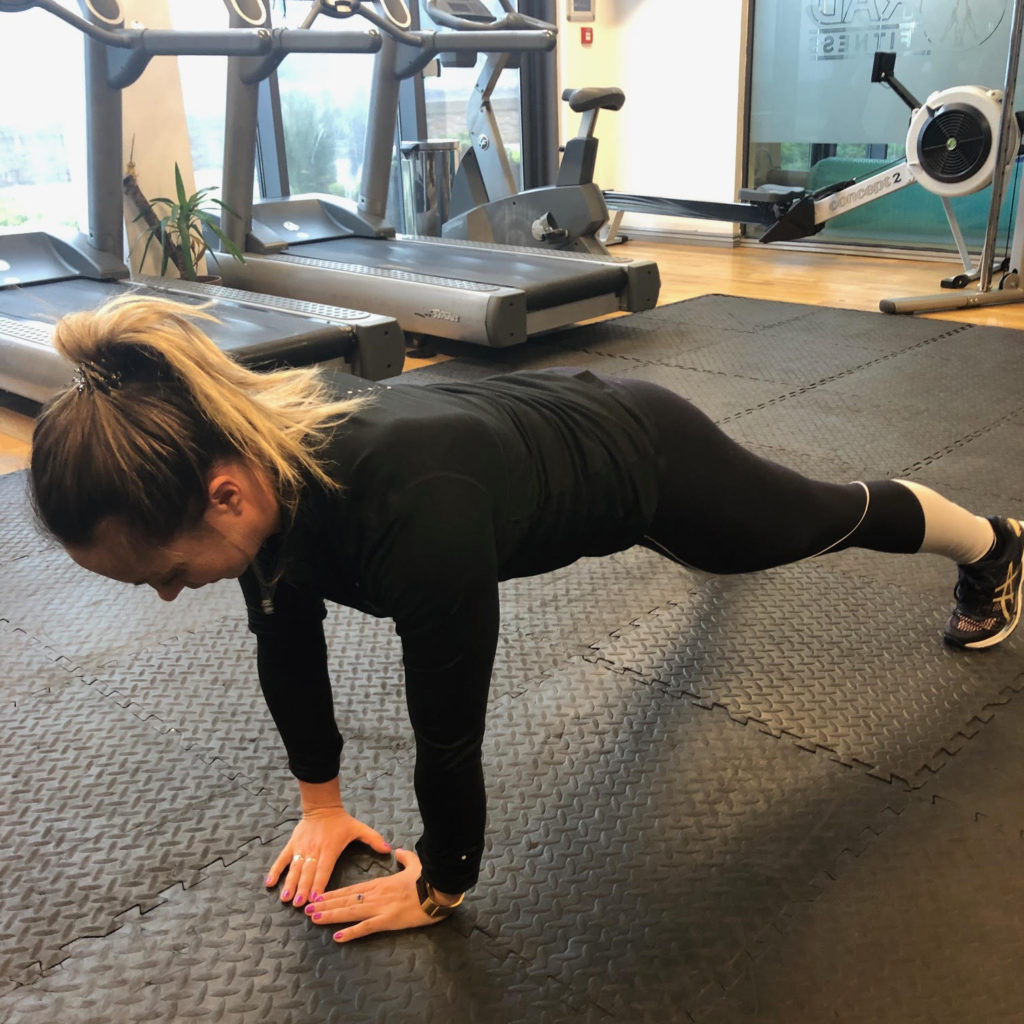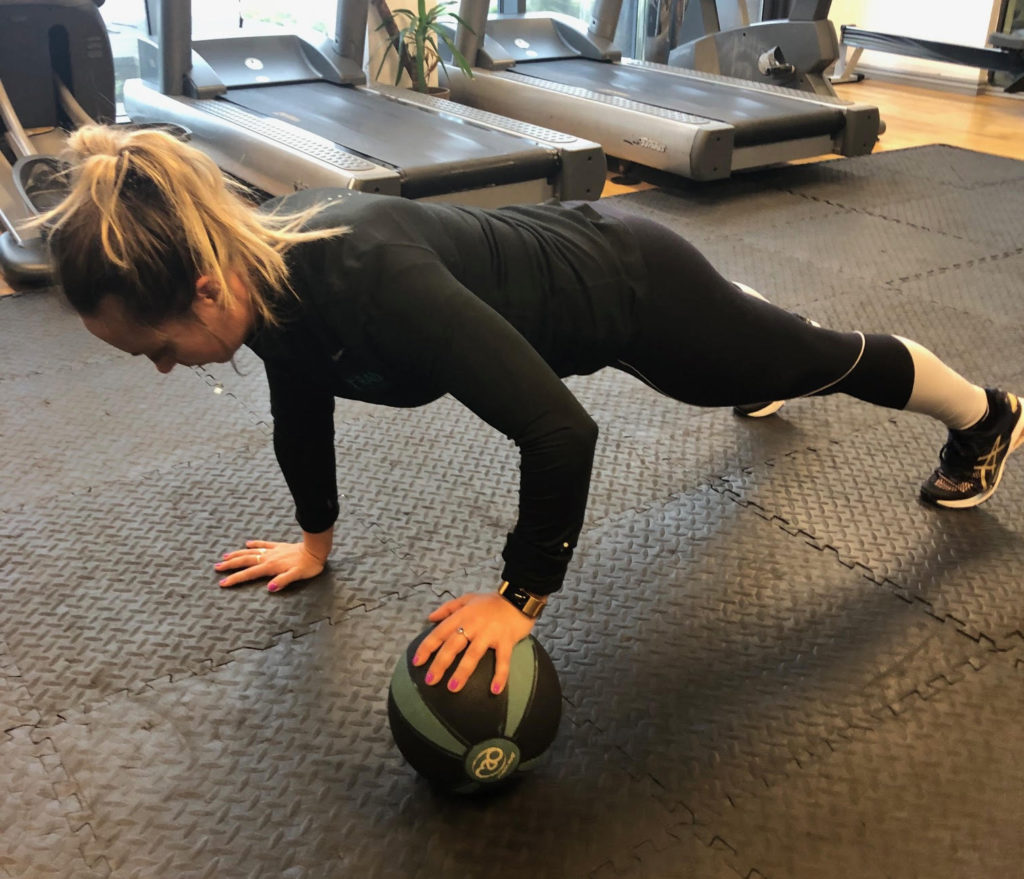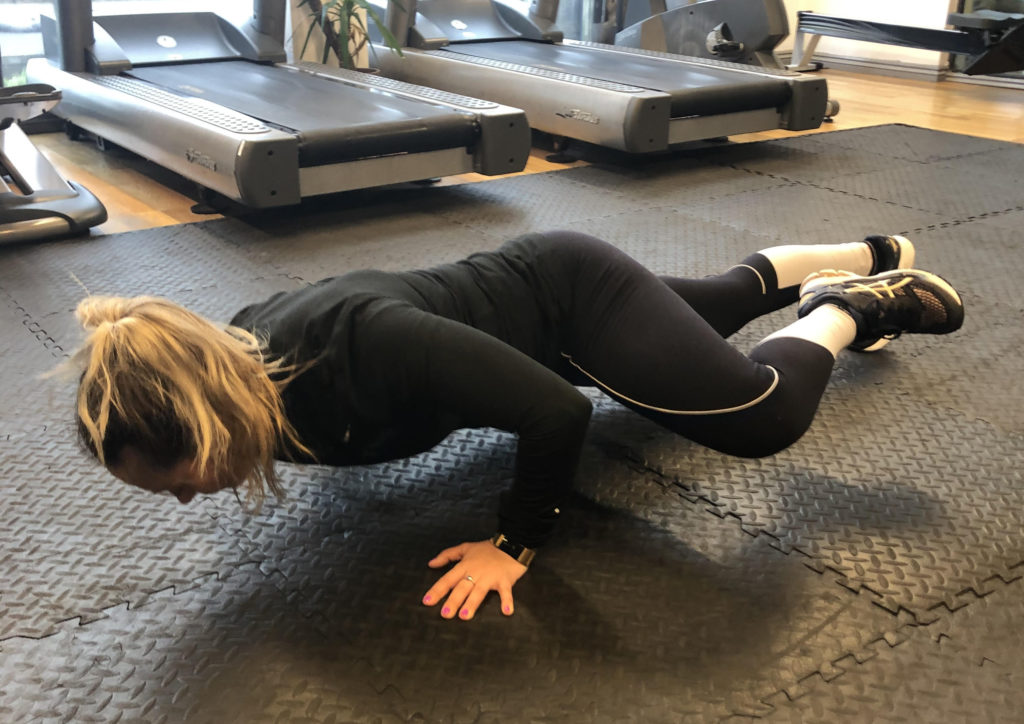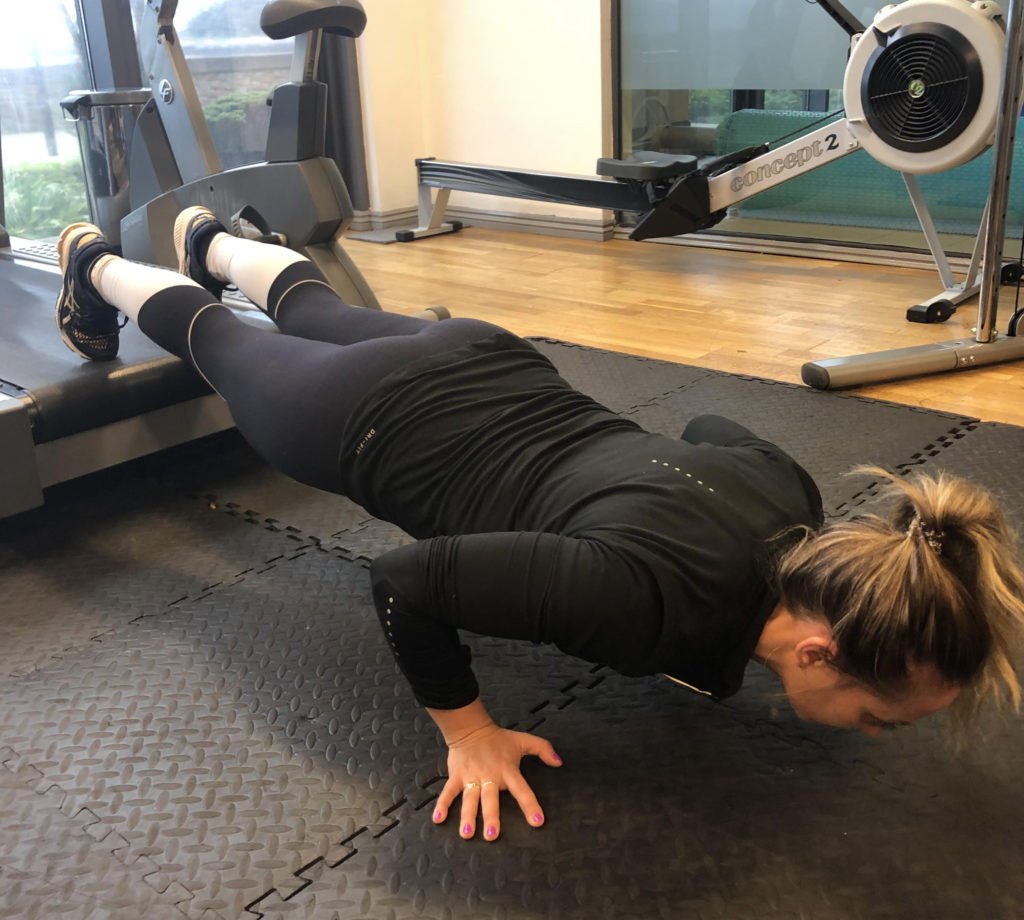If you only do one exercise for archery, Lucy O’Sullivan says do press-ups.

There are so many amazing exercises out there for archery that all archers should have in their “gym quiver”, but I think if any upper body sport had to choose one exercise, that is fairly straight forward and accessible to all it would be the press-up, also known as the push-up.
Here is why press-ups are great. Not only does a press up work your upper body, it works you all over great and can even give you a great core work out too. Some of the muscles that they work are; the pecs (chest muscles), triceps, biceps (arm muscles), shoulder muscles, lower back and ab muscles.
These are muscles you use every day, so there should no issues with completing press-ups every day, so doing 10 before bed and 10 when you wake up every day shouldn’t give you any injuries (as long as you are performing them with proper technique).
Literally everyone can perform this wonderful exercises. There are so many variations that I could even make my granny do them to increase her upper body strength.
Proper technique points
Make sure that your elbows are close to your body, if the elbows start pointing in the direction of your ears you will damage the supraspinatus (rotator cuff muscle) under the shoulder joint and the muscle can grate.
By keeping the elbows in towards the body, not only will you work your triceps more it will protect the shoulder joint and keep the rotator cuffs happy. A tip for doing this is to have your thumbs in a slight ‘thumbs up’ position and your elbows will automatically stay close to the body.
Please make sure that as an archer when you are doing press-ups you are working on your scapular, this means squeezing your scapular (the ‘wings’ on your back) muscles together as you lower down into a press-up.

Also note your wrists may initially hurt with the press-ups, this will get better as you get stronger, so maybe drop back a level until you are strong enough or persevere for a few weeks. But of course if there is any continuing pain in the wrists or anywhere, see a doctor.
There is no excuse if you think you are too heavy or inexperienced. With a beginner (or your granny) press-ups should be performed by having both hands against a wall for wall press-ups and lowering your chest to the wall and of course pushing back up again.
If that is becoming too easy it is time to try kneeling floor press-ups! Pop yourself into a plank position and then lower your knees to the floor, hold this position, sucking in (engaging your abs) and lowering yourself to the floor and pushing up again.
Getting to full push-ups
Next is the full press-up but limiting the depth, I tend to pop a weight, bottle or something of a good height, underneath my clients chests and get them to drop down to that height and pushing up again.
As this becomes easier drop the height of the item under your chest increasing the depth of your press-ups, until you can touch your chest to the floor.
Keep working on the depth of press-ups now, getting your chest to the floor, so we can now start playing around with arm and position. Remember with all of these, if they are too hard, you can drop back onto your knees and work up to full press-up position.

Variations
1. You can try wide arm press-ups continuing to squeeze the scapular while dropping down and keeping a low depth.
2. The opposite of wide arms are diamond press-ups, these really hammer the tricep muscles and are great for shoulder health.
3. Another tricep heavy press-up is the reverse wrist press ups. Be careful with this one on the wrists, but give it a go to increase shoulder stability.
4. Next you can vary the height of the press ups either with your feet or hands elevated. Start with elevated hand press-ups, you can either have one or both individual hands up; on a weight, kettle bell, TRX, or medicine ball, the chest will have to lower down further than normal which will really challenge the muscles.
5. Next would be feet elevated press-ups, you can pop your feet up on; a step, a wall, a sofa or anything, you must continue to lower the chest as close to the floor as possible and squeeze the scapula together.
6. Single leg press-ups are another way to offset your balance and make press-ups hard by popping one foot on top of the other forcing more weight on one leg, or lifting one leg up in the air.
7. One of the hardest variations of all is single arm press-ups, I would suggest practising these against a wall first, then with your knees down on the floor and then in the full press-up position. Again try and keep good technique, keeping the elbows close to the body, squeezing your scapular and keeping a low depth.

Now you have nailed these press-up variations let’s try some more dynamic variations:
8. Shoulder tap press-ups are an easy place to start, you drop down into a press-up and then at the top position you lift one arm off the floor, touch the opposite shoulder and replace the hand to the floor, drop back down into a press-up and repeat with the other side.
9. Typewriter press-ups are maximum level for your shoulder stability, they involve the bottom of the press-up having one arm straight out to the side and your body leant to that side, then you move to the other side for the next press-up.
10. Do you want to add some core work? Try mountain climber press-ups, perform your normal press-up and at the top position bring your knees to your chest 4 times and then drop back down into a press-up and continue.
11. For a hard press-up on your core and shoulders try Spiderman press-ups. These involve your bringing one knee up to the same elbow and then dropping down into a press-up, pushing back up again you swap over the knees and repeat. Check on YouTube for details.
12. Last but not least, the hardest one on this list will probably be the clap press-ups. There are many variations of this exercise, you can clap your hands together and land with your hands wide one time and with your hands together the next time.
Other variations have people doing clap press-ups whereby they can jump their arms up onto a bench and back down to the floor, and other variations have people clapping their hands behind their back etc. (Have a look on YouTube!)
But for most of us, just practice performing a normal press-up and on the push up, try and get your hands off of the floor and back down into the same spot.
As you get better you can try and clap your hands together, I suggest that this exercise is performed against a wall first, then on a bench, and then on your knees on the floor before you are in the full press-up position. Happy pressing!


[…] on pushups, even the most ‘beginner’ forms (as recommended by Lucy O’Sullivan in a previous issue) will help a great deal. […]